
Since I did not kill, skin, and examine the skull and teeth of any of the little chipmunks I saw on the flanks of Mt. Adams last Saturday, I could not be absolutely positive that these were Neotamias minimus (least chipmunk), which I was basing on my subjective feeling when I saw them moving about that they were very small, rather thin chipmunks, and the rumps seemed too light colored for yellow-pine chipmunks. And it turns out they were not. According to my friend Dennis Paulson, who is a very knowledgeable biologist, they are the very similar yellow-pine chipmunk (Neotamias amoenus), since apparently least chipmunks are not found in that area, being denizens of sagebrush steppe at lower elevations further east.
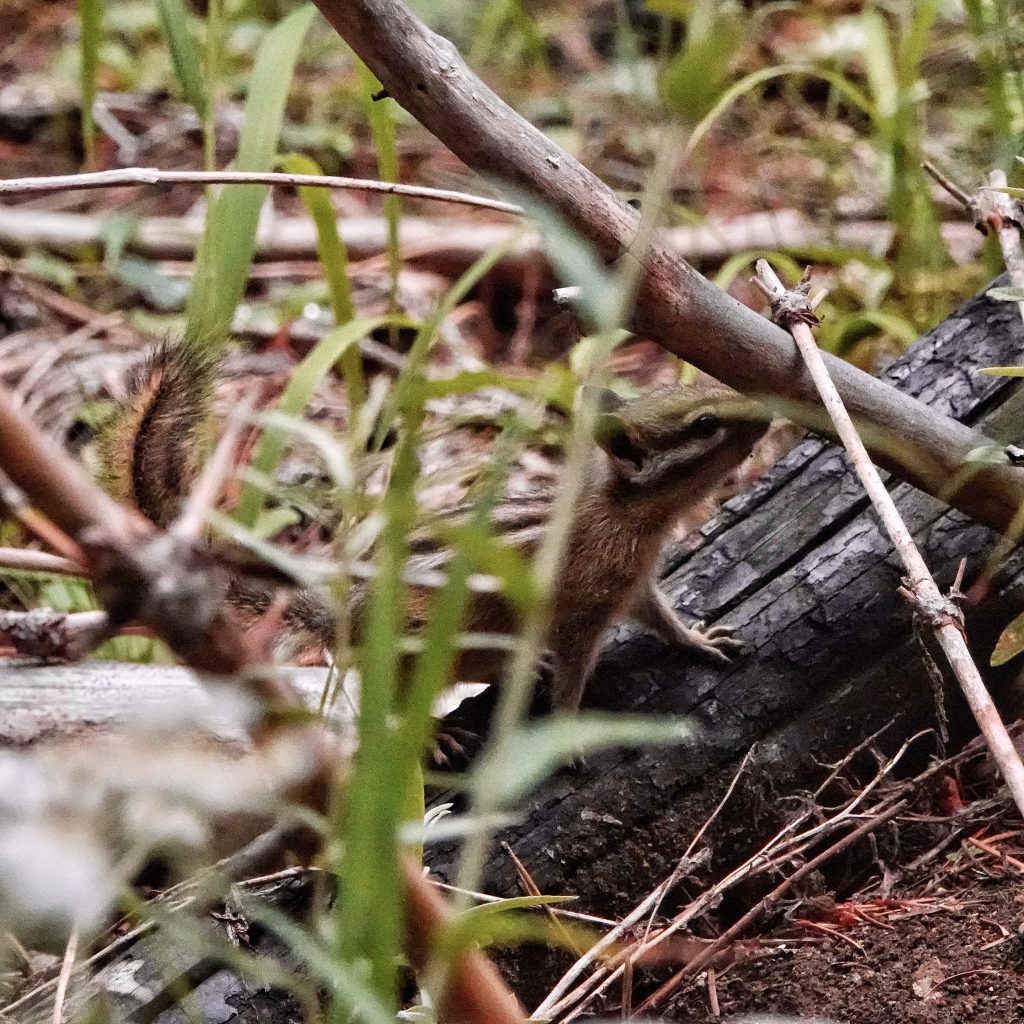
So, I was wrong, as was the information I had that indicated rather the opposite in terms of the respective ranges of the two species. A good reminder that field or photo identification of many small mammals is a crapshoot at best. Sometimes I wish I was more like my wife, Pam, who finds all chipmunks ‘delightful’ and ‘adorable’, without expending any energy trying to hang a label on them. Regardless, I have removed the incorrect original post that labeled these chipmunks incorrectly, and that described a life that wasn’t theirs, and I have replaced it with this one.
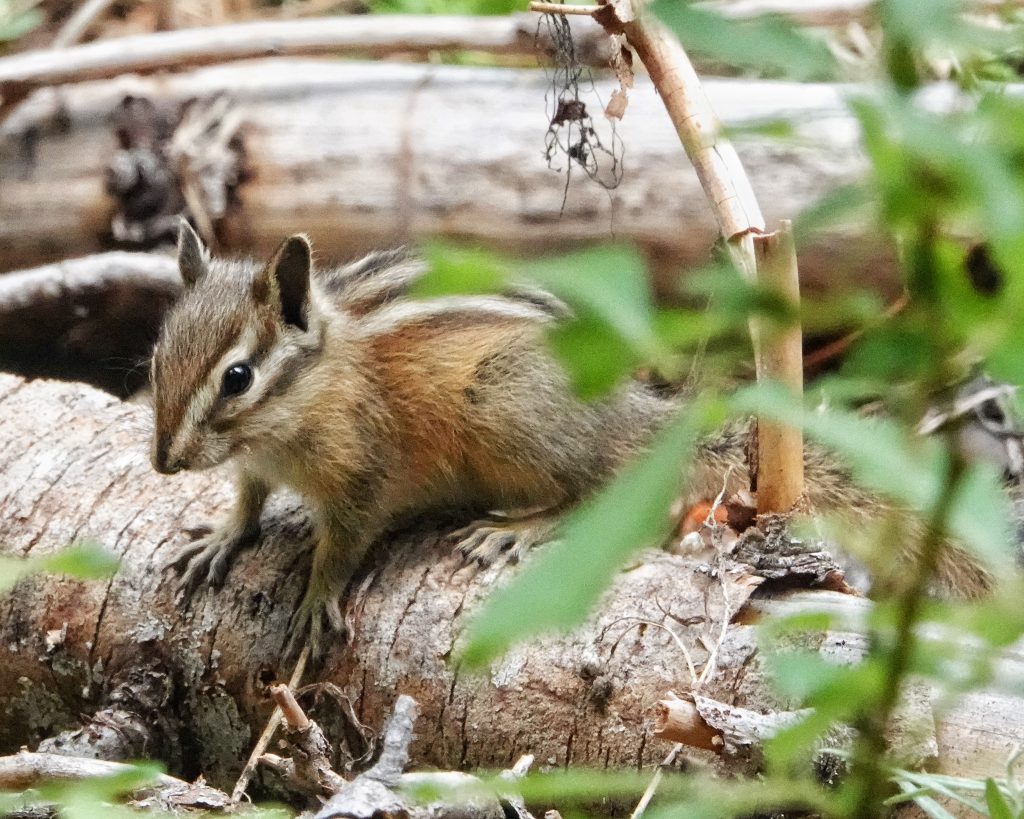
“Home range is a few acres, parts of which may be used seasonally (see Sutton 1992). In Washington, density was fairly stable over 3 years at 1.25/ha (see Sutton 1992). Easy prey for many kinds of predators. Competitive interactions with other chipmunk species may limit habitat use. Effective dispersal agent for Jeffrey pine seeds…Digs burrows 7-21″ deep. Constructs grass nest in burrow under stump, log, or rock; also nests above ground in woody vegetation…Hibernates late fall-early spring. May become lethargic during cold summer weather. Stores little energy as body fat; awakens periodically in winter to feed on stored seeds.” BC Conservation Data CentreSpecies Summary for Neotamias amoenus
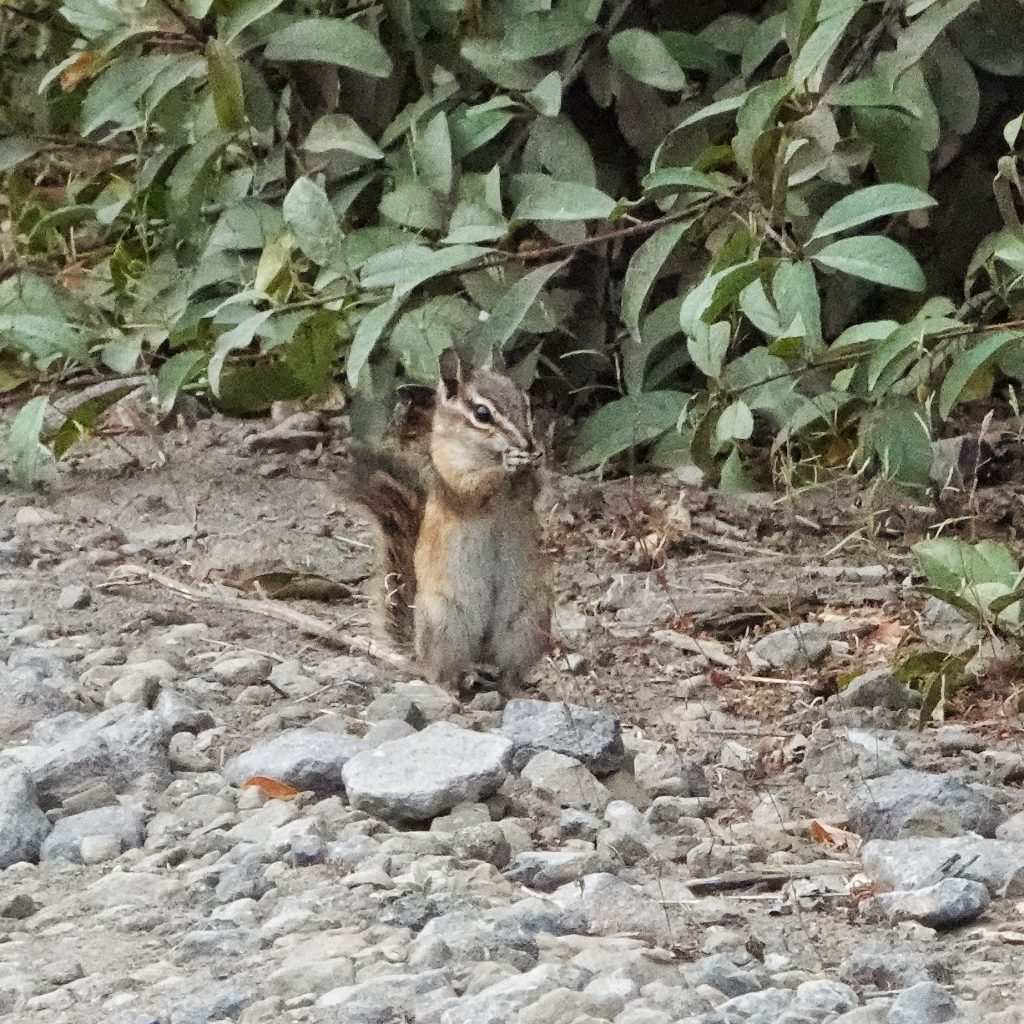
Description-Length 7 1/8–9 5/8″, tail 2 7/8–4 1/4″, Wt 1–2 1/2 ounces; “These animals have five black, evenly-spaced, longitudinal stripes down the back. The three dorsal stripes extend from shoulder to rump, whereas the two lateral strips extend only to mid-body. The pale stripes are usually white or grayish. Body color varies depending upon subspecies. Tamias amoenus affinis has a pinkish-cinnamon colored body, T. a. monoensis is a cinnamon buff, T. a. luteiventris is sayal-brown, T. a. felix is ochraceous tawny, and T. a. ludibundus is tawny. The underside of the tail ranges from pinkish-cinnamon to grayish-yellow to sayal-brown. The ears are whitish behind and black in front” ADW: Tamias amoenus: INFORMATION
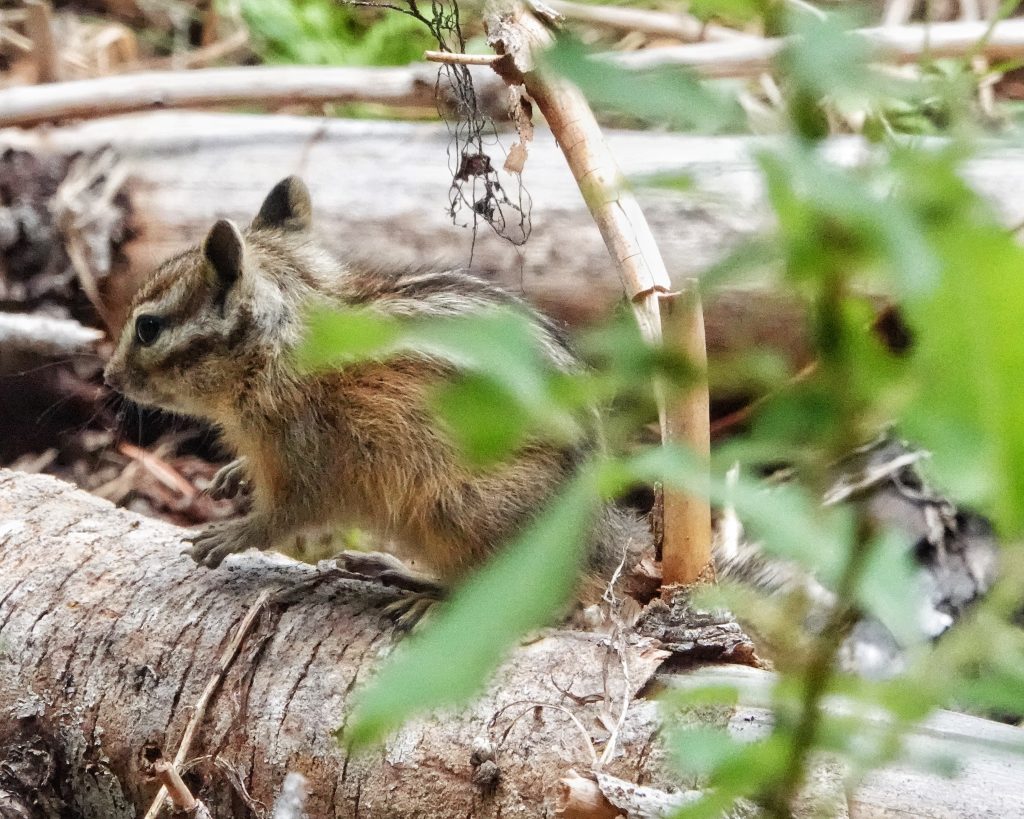
Similar species– “Lodgepole chipmunks are larger than yellow-pine chipmunks, have bigger ears, and more sharply contrasting stripes. The outer stripes of lodgepole chipmunks are also wider than the inner stripes. Least chipmunks are smaller than yellow-pine chipmunks, and also paler in color. Yellow-pine chipmunks are smaller and redder than Unita chipmunks. Unita chipmunks also have grayer shoulders and heads.” ADW: Tamias amoenus: INFORMATION
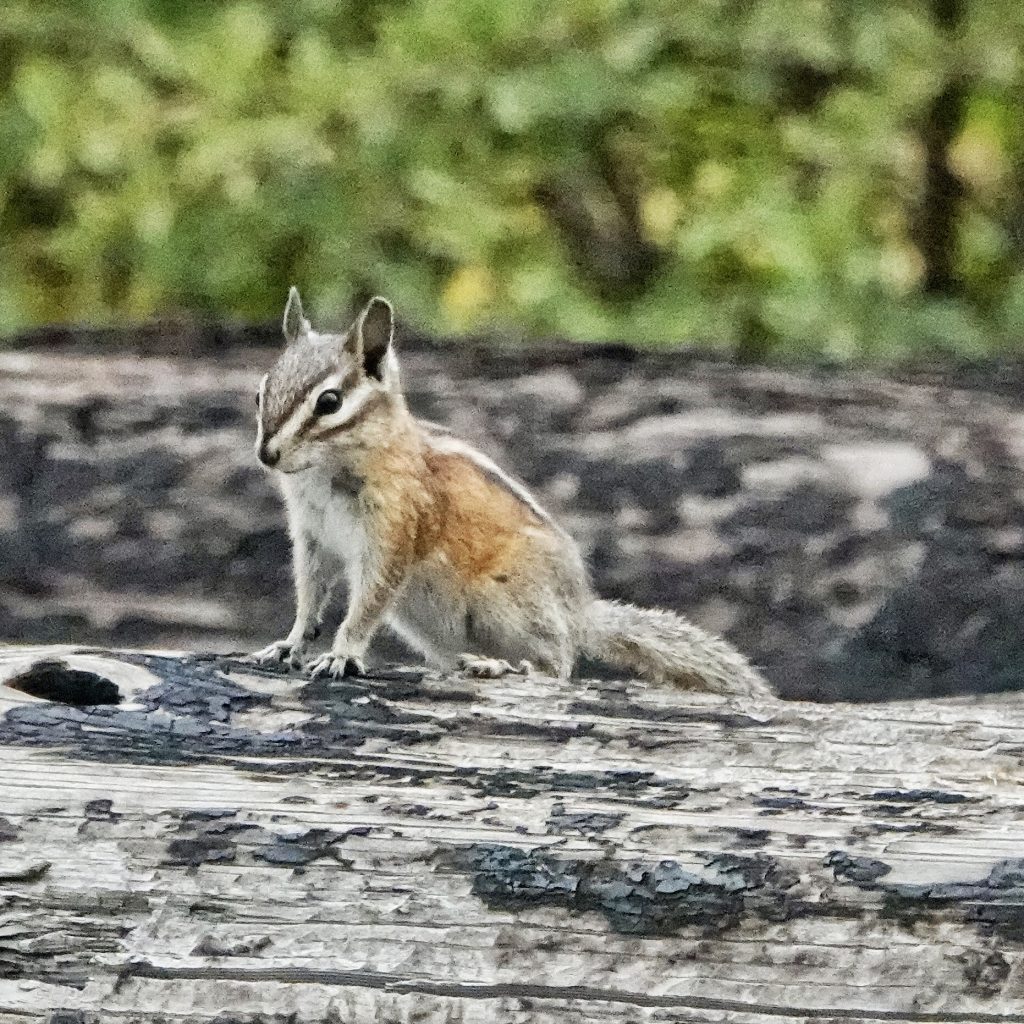
Habitat– “Generally in brushy areas interspersed with herbaceous vegetation and open conifer stands; shrubs typically present include snowberry, chinquapin, mountain mahogany, antelope brush, currant, and buckbrush (Sutton 1992). Found among logs, brush, and rocky outcrops. Also in brushy areas between subalpine forest and alpine tundra, and in alpine areas themselves.” BC Conservation Data CentreSpecies Summary for Neotamias amoenus; “Ponderosa pine seems to be the common factor in habitats occupied by this species.” Yellow-pine chipmunk | Oregon Department of Fish & Wildlife
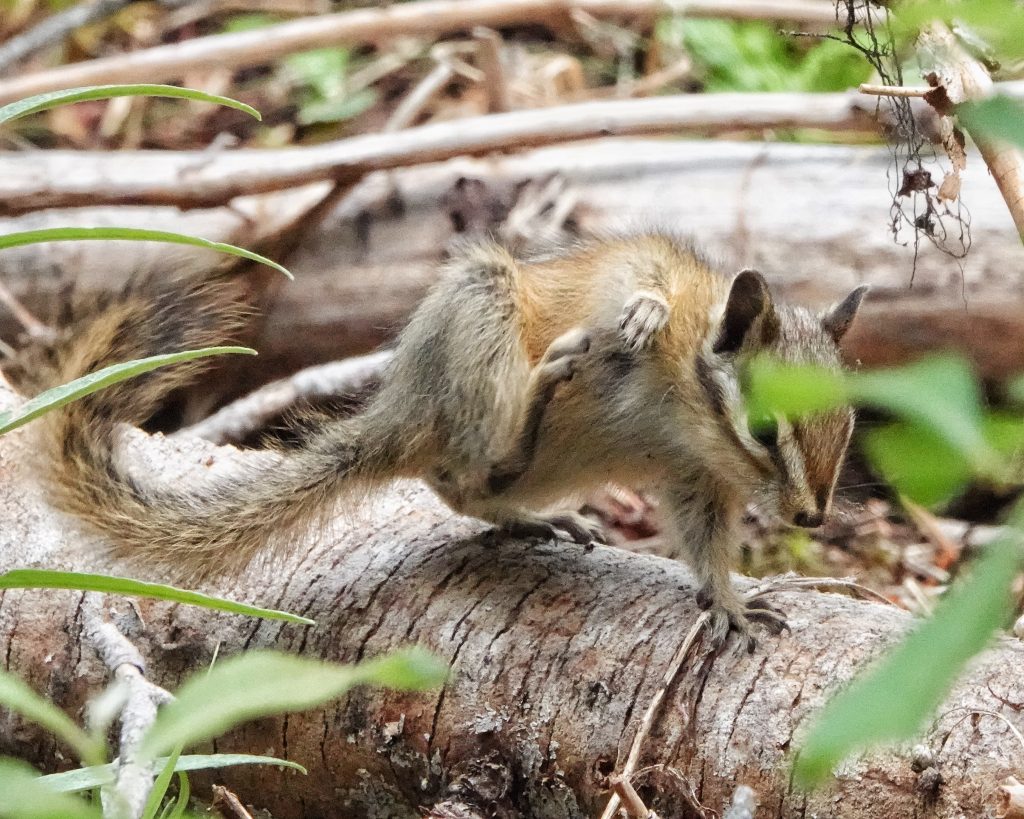
Range– “Yellow-pine chipmunks are found in western North America. Their range extends from central British Columbia and southwestern Alberta in Canada, south to California, northern Nevada, and northwestern Utah, east to central Montana and western Wyoming.” Yellow-Pine Chipmunk – Facts, Diet, Habitat & Pictures on Animalia.bio; in the PNW they are found in the Olympics, throughout the Cascades where there are ponderosa and lodgepole pines (yellow pines), and eastward in appropriate habitat through the Rockies.
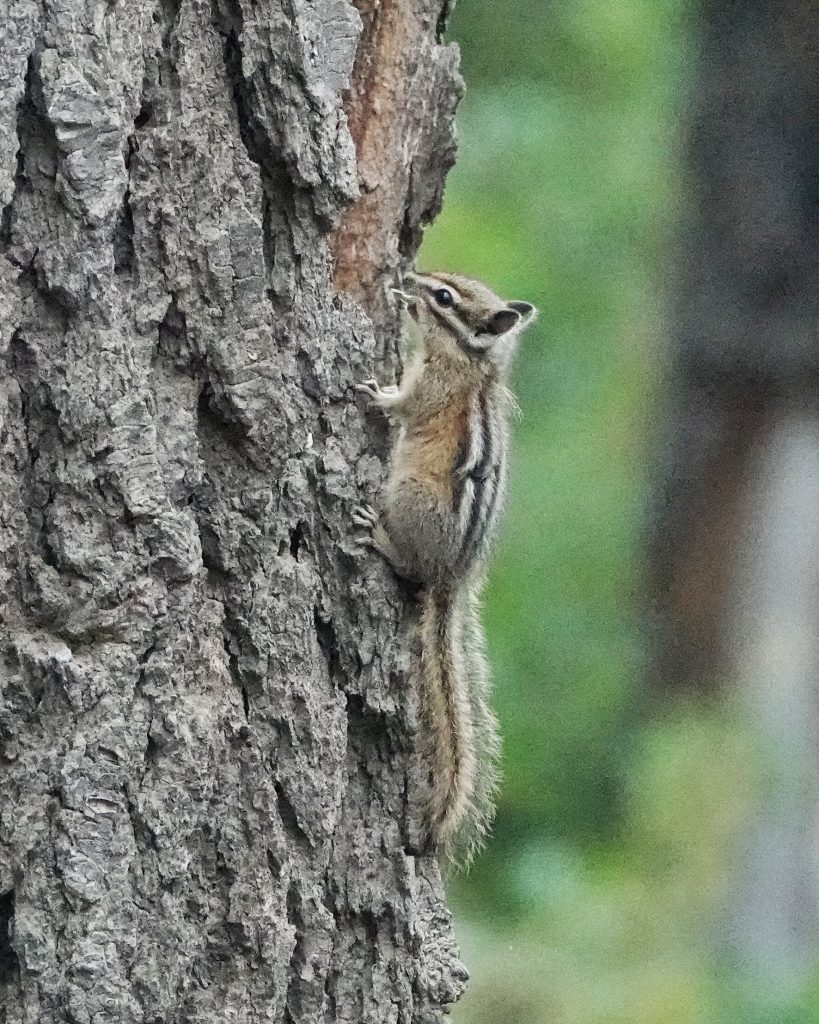
Eats– “Yellow-pine chipmunks are mostly omnivorous. They consume at least 59 species of seeds, plants, fruits, fungi, corms, and insects. They are also known to eat small mammals, bird eggs, and roots. They use their cheek pouches to carry conifer seeds and other foods to their burrows. These chipmunks forage both on the ground and in trees. Foraging is done during the day and from spring to fall. In the fall, they begin storing food in caches for winter. Winter caches of up to 68,000 items, ranging from seeds to bumble bees, have been recorded.” ADW: Tamias amoenus: INFORMATION
Eaten by– “Predators include coyotes (Canis latrans), goshawks (Accipiter gentilis), long-tailed weasels (Mustela frenata), badgers (Taxidea taxus), bobcats (Lynx rufus), rattlesnakes (Crotalus viridis), and sparrow hawks” ADW: Tamias amoenus: INFORMATION
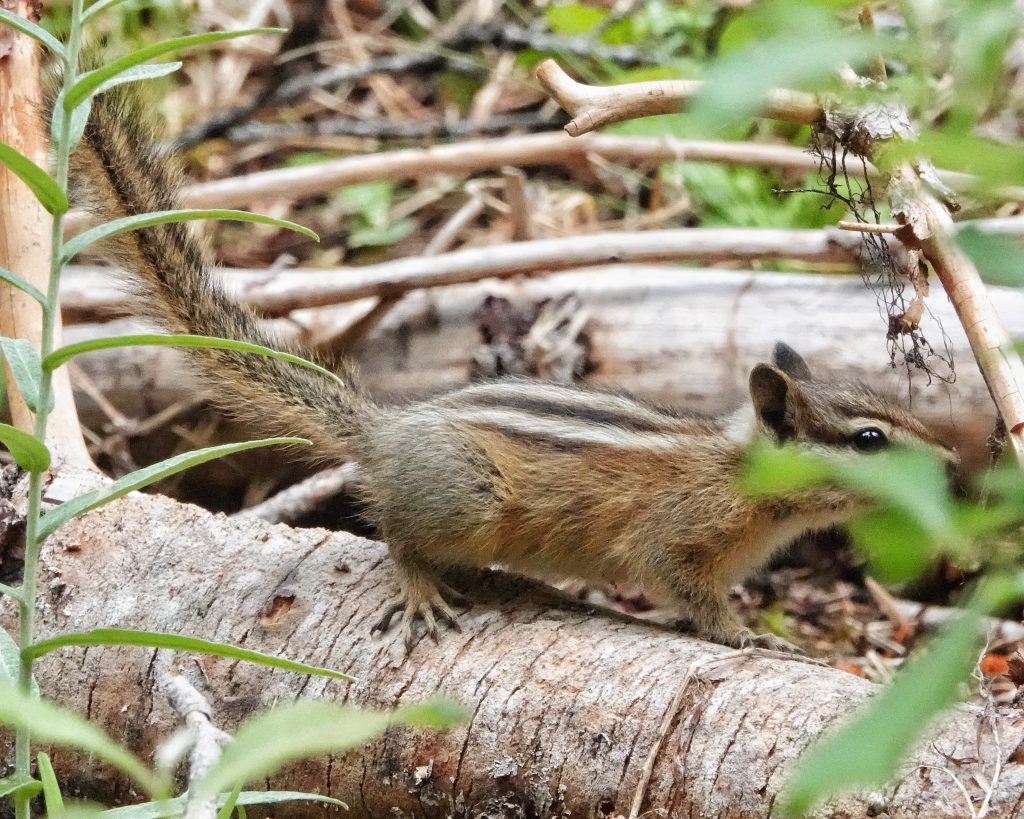
Adults active– Basically from snow melt to snowfall, or at least extended sub freezing temperatures.
Life cycle– “Yellow-pine chipmunks are polygynandrous. Females are in estrous for one day each year. They use vocalizations to attract mates a few days before the onset of estrous. On the day of estrous, females are typically pursued by two to six males in what is called a “mating chase”. A female mates with multiple males during this mating chase. All sexually mature males and females mate during the mating season, which occurs in late April or early May. (Larrison, 1976; Schulte-Hostedde, et al., 2002; Sutton, 1992; Verts and Carraway, 1998; Wilson and Ruff, 1999; Zeveloff and Collett, 1988). Female yellow-pine chipmunks are in estrous for one day and breed only once per year during late April to early May. Average gestation period is 30 days, after which a female usually gives birth to a litter of 3 to 8 babies. Young are highly altricial at birth and remain in the burrow until they are weaned at six weeks of age. Young begin to disperse and find their own burrows at about 8 to 12 weeks of age. They reach sexual maturity at 12 to 23 months. (Harvey and Polite, 2003; Schulte-Hostedde, et al., 2002; Sutton, 1992; Verts and Carraway, 1998; Wilson and Ruff, 1999; Zeveloff and Collett, 1988)” ADW: Tamias amoenus: INFORMATION
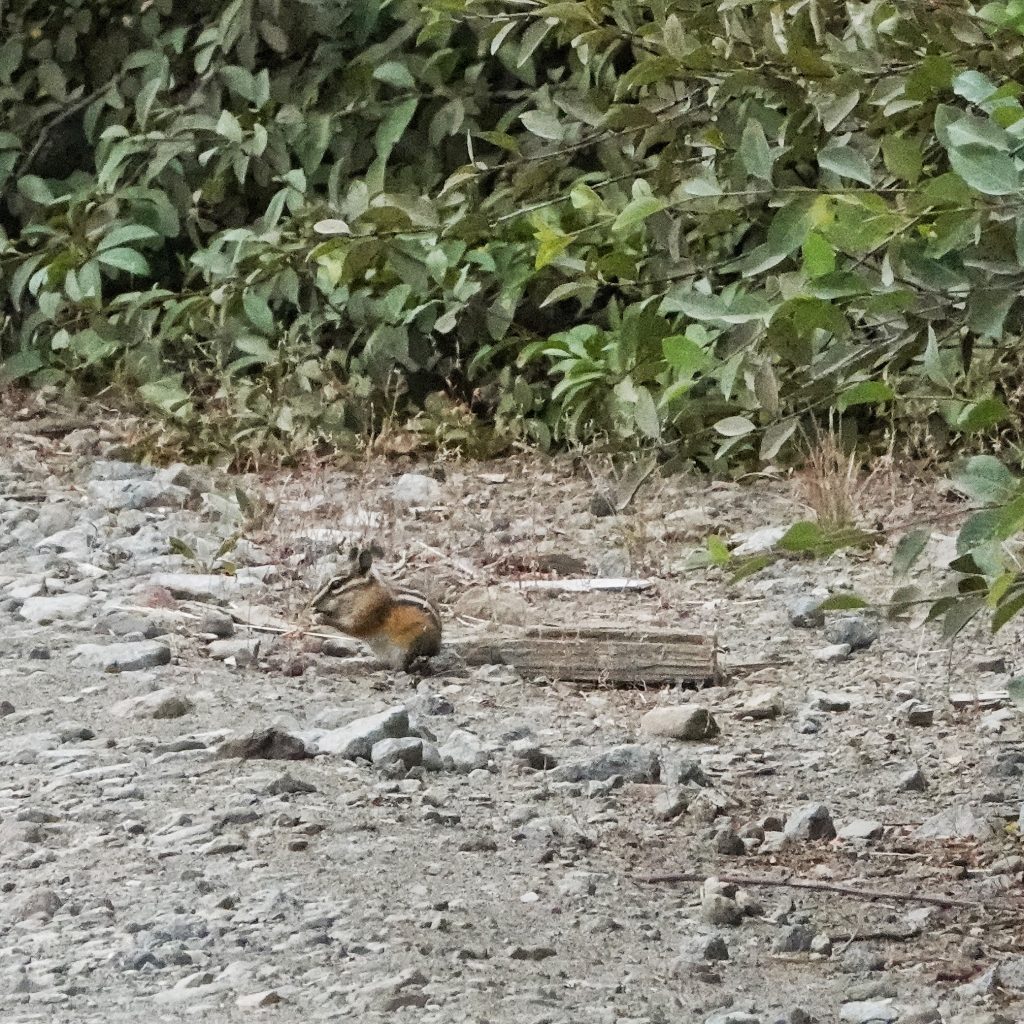
Etymology of names– Neotamias is from the Greek word for ‘storer’ (which is the etymology of the genus Tamias to which these chipmunks formerly belonged- see https://www.webpages.uidaho.edu/~jacks/PattersonNorris.16.pdf for the recent taxonomic changes in the chipmunk clade), and the Greek word for ‘new’, added as a prefix to indicate that they are evolutionarily younger than the sole remaining member of Tamias, the eastern chipmunk Tamias striatus. The specific epithet amoenus is from the Latin word for ‘pleasing/lovely’ which seems an appropriate epithet for these beautiful little creatures.
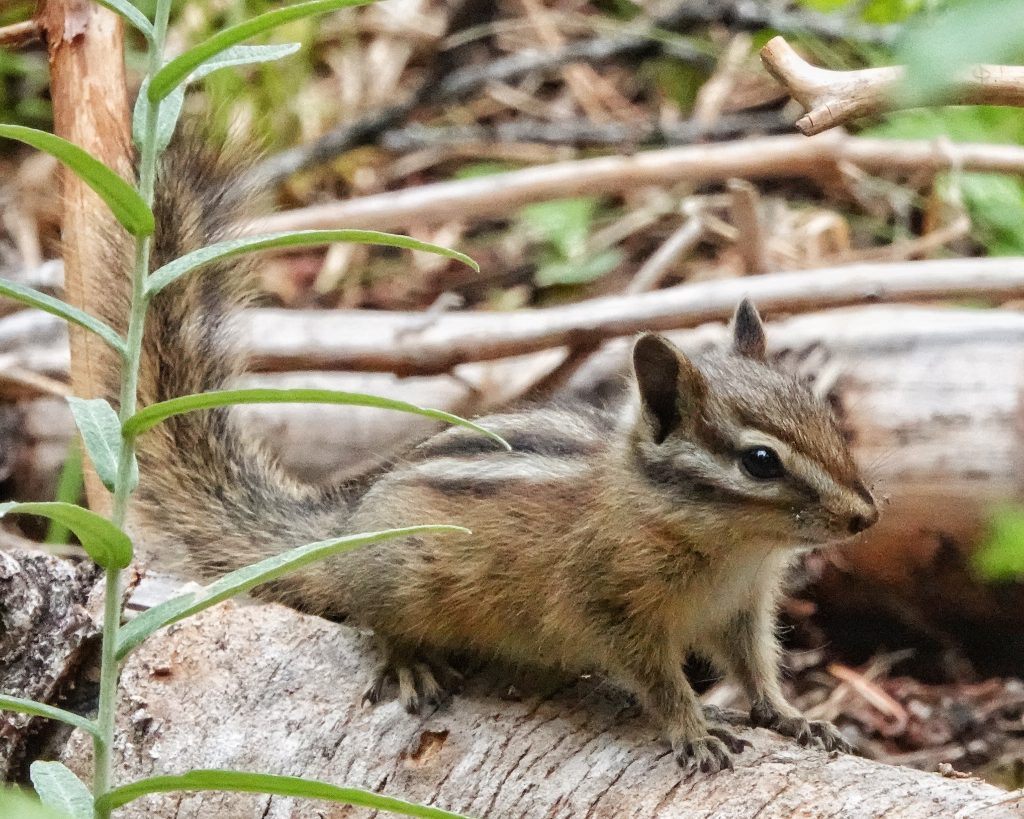
ADW: Tamias amoenus: INFORMATION
Yellow-Pine Chipmunk – Facts, Diet, Habitat & Pictures on Animalia.bio
https://myodfw.com/wildlife-viewing/species/yellow-pine-chipmunk
Yellow-pine chipmunk (Neotamias amoenus) – JungleDragon
Dan, your chipmunk is surely a Yellow-pine, as Least Chipmunks are only at low elevations in sagebrush steppe in the Columbia Basin.
Well, that’s a bummer, Dennis! Can you tell me where you got that information? Because it’s not what my books were saying. Not arguing- I just want to get correct information before I redo the whole thing.
I rewrote the whole profile to reflect the correct identification, Dennis. Really hope you weren’t just messing with me (: